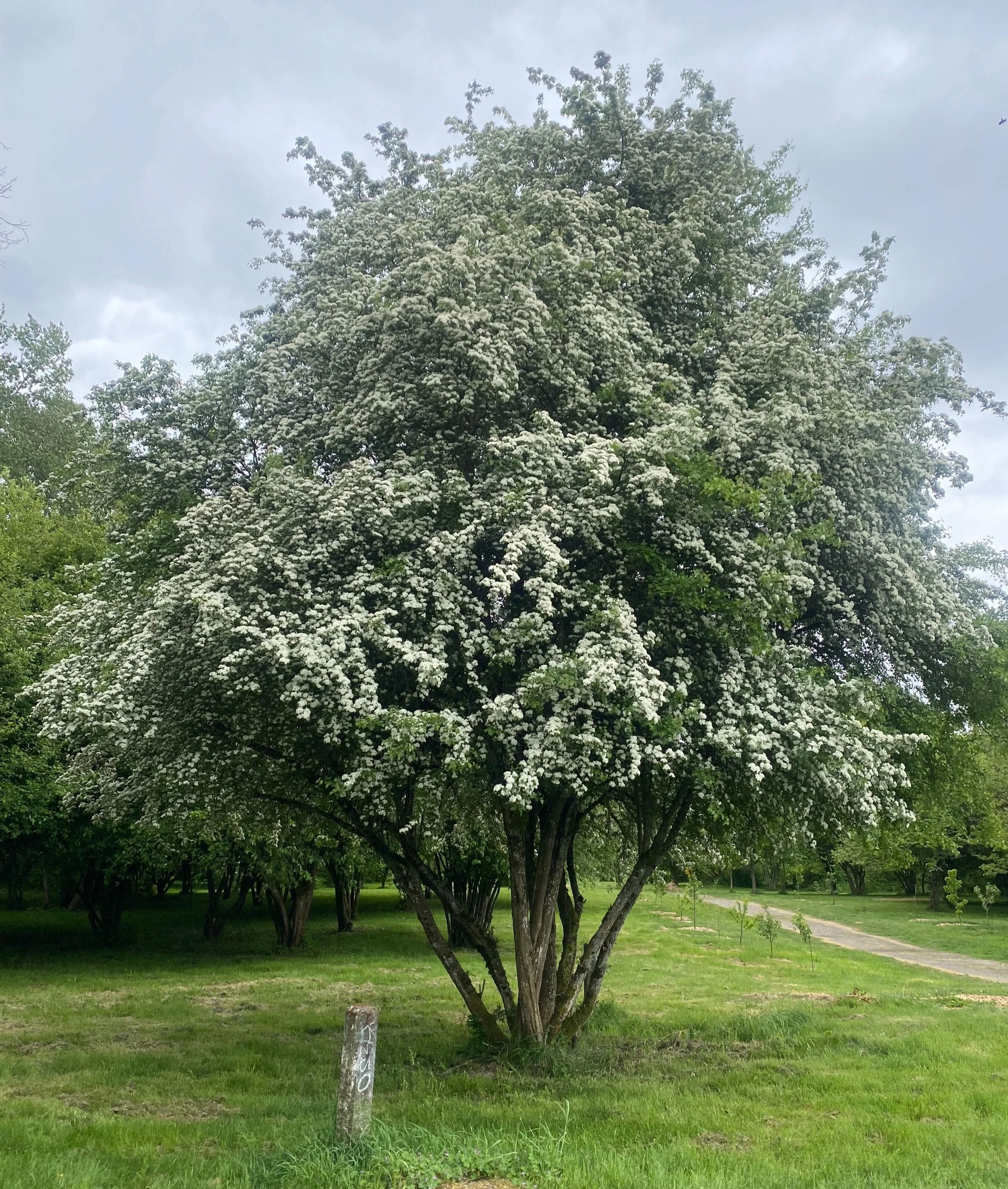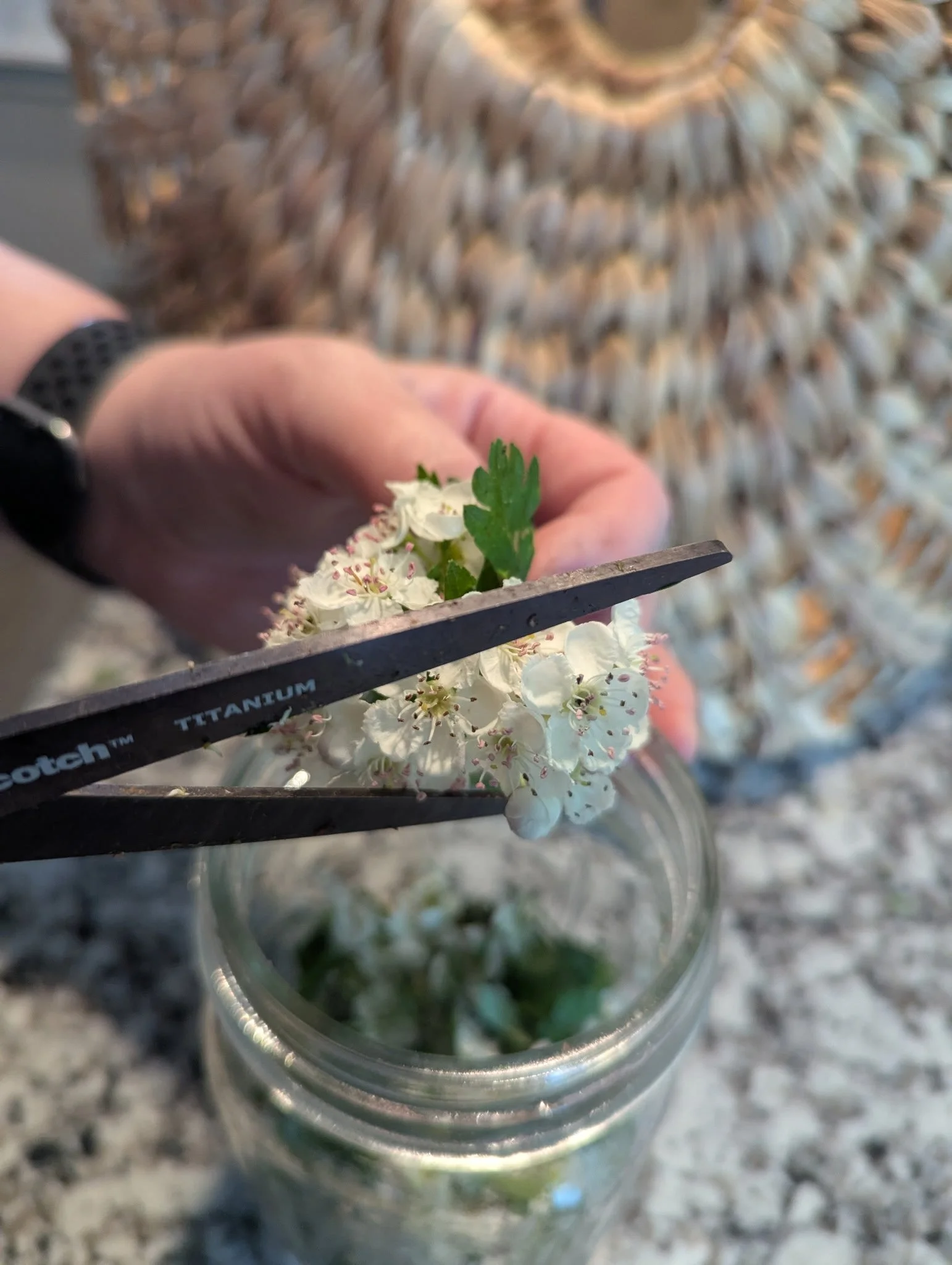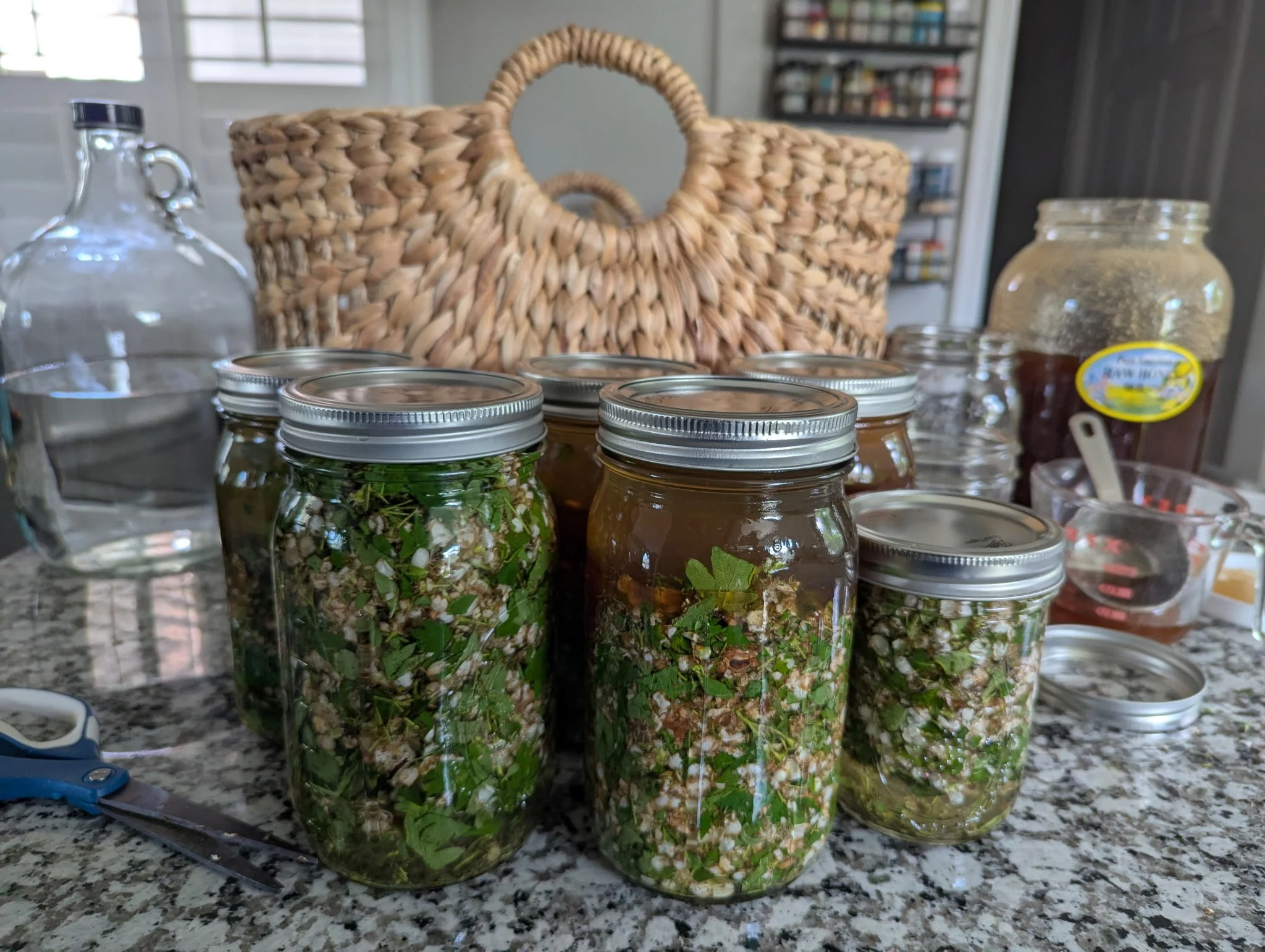Sacred Hawthorn: Medicine, Myth and Magic
Hello loves!
Hawthorn is a plant steeped in folklore, medicinal wisdom, and magic. With its thorny branches, delicate flowers, and ruby-red berries, it has enchanted herbalists and nature lovers for centuries.
In this post, we’ll explore its rich history, powerful healing properties, and even its mystical uses. Let’s dive into the world of Hawthorn!
History and Lore
Hawthorn (Crataegus spp.), also known as thornapple or may-tree, has deep roots in both folklore and healing traditions. In ancient Greece, it was associated with love and marriage, often adorning wedding altars.
In Celtic traditions, Hawthorn symbolized protection and was believed to guard against evil spirits—so much so that damaging a Hawthorn tree was said to bring misfortune.
The tree was sacred to the fairies, and in many European traditions, it was thought to be a threshold between worlds. During May Day celebrations, its flowering branches were used to honor spring, fertility, and renewal.
The Power of Hawthorn
Hawthorn is one of the most revered heart herbs in Western herbalism. Every part of the plant—berries, flowers, and leaves—offers profound healing benefits.
Rich in antioxidants like flavonoids and oligomeric proanthocyanidins, Hawthorn helps protect the heart, improve circulation, and gently regulate blood pressure. While the berries are well-known for cardiovascular support, the flowers and leaves are equally potent. They’re often used to calm the nervous system, ease anxiety, and provide long-term tonic support for the heart—physically and emotionally.
Together, these parts form a balanced, heart-nourishing remedy used by herbalists for generations.
Where It Grows
Hawthorn grows naturally across temperate regions of Europe, North America, and Asia.
It thrives in hedgerows, meadows, and woodlands, often forming dense thickets with its sharp, protective thorns.
You’ll recognize it by its deeply lobed leaves, white or pink flowers in spring, and bright red berries in the fall.
This beauty grows near our home with several others. We’re super blessed to have them so close by.
How and When to Harvest
Flowers and Leaves: Harvest in mid to late spring when the flowers are just beginning to bloom. Choose a dry morning, once the dew has lifted.
Berries (Haws): Gather in late summer to early autumn, once they’ve turned a deep, vibrant red and are slightly soft to the touch.
Always harvest with respect, leaving plenty behind for pollinators, wildlife, and future growth.
Tincture Recipe: Hawthorn Flower
A tincture made from unpollinated Hawthorn flowers offers gentle heart support and nervous system regulation.
Ingredients:
Fresh or dried unpollinated Hawthorn flowers
80–100 proof vodka or brandy
A clean glass jar with a lid
Cheesecloth or fine strainer
I use a simple pair of scissors and chop them directly into the jar.
Instructions:
Fill your jar ½ to ¾ full with flowers.
Cover completely with alcohol.
Seal tightly and store in a cool, dark place for 4–6 weeks, shaking daily.
Strain and bottle. Label with the name and date.
How to Use:
Take 30–40 drops (about ½–1 tsp) up to three times a day in water or tea. This tincture supports heart function, helps manage mild high blood pressure, and soothes emotional stress.
The Power of Hawthorn Berries
Hawthorn berries—also called haws—are tiny powerhouses of cardiovascular support. Abundant in antioxidants, they help reduce inflammation, support blood vessel health, and improve heart function. Research suggests they can:
Improve circulation
Lower blood pressure
Strengthen heart muscle contractions
Support overall cardiac performance
They’re often used as a gentle tonic for mild heart failure, palpitations, or stress-induced heart symptoms. Hawthorn berries may also aid digestion and ease anxiety. Enjoy them as tea, tincture, or in capsule form for a grounded, heart-centered remedy.
Some of these are tincture and other are elixirs. Many of my clients prefer a little sugar to help the medicine go down ;)
Magical Uses of Hawthorn
Hawthorn has long been valued in magical traditions for its protective and heart-opening properties. It is believed to:
Ward off negative energies
Promote love and emotional healing
Support fertility and happiness spells
Hang branches above doorways for protection, add dried berries to charm bags, or incorporate the flowers in love rituals to invite harmony and connection.
Conclusion
Hawthorn is truly a tree of the heart—physically, emotionally, and spiritually. With its roots in myth and its branches reaching into modern herbalism, it’s a powerful ally for those seeking wellness, protection, and a deeper connection to nature.
Whether you’re crafting remedies, creating magical talismans, or simply admiring its blooms on a spring walk, let Hawthorn remind you to care for your heart in all the ways that matter.
And as always, my friend—take care of you.
With love,
Melody






